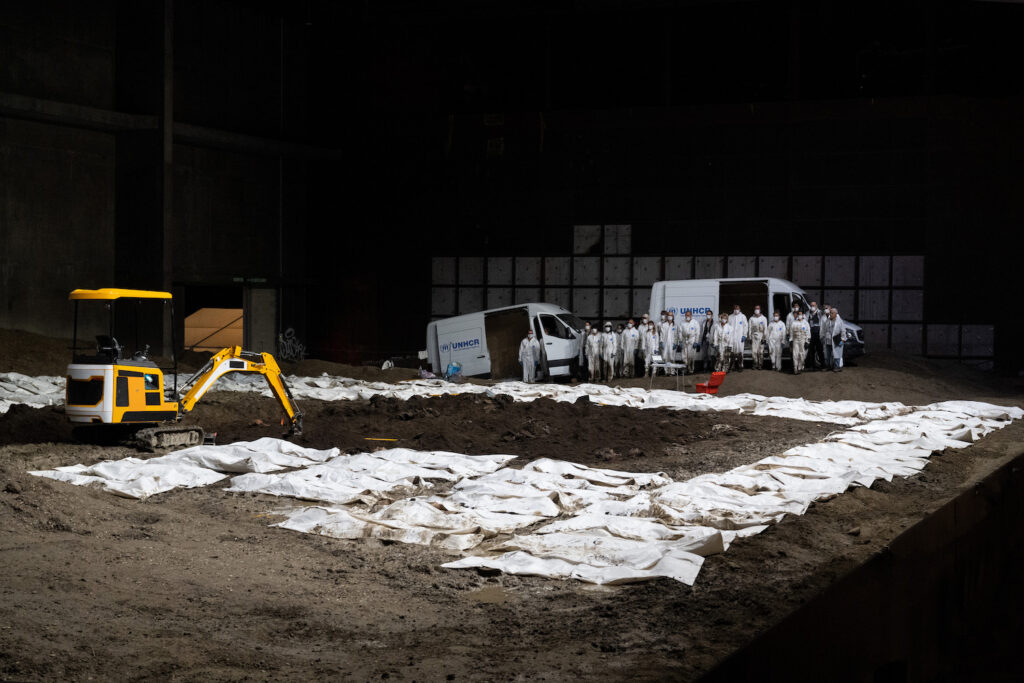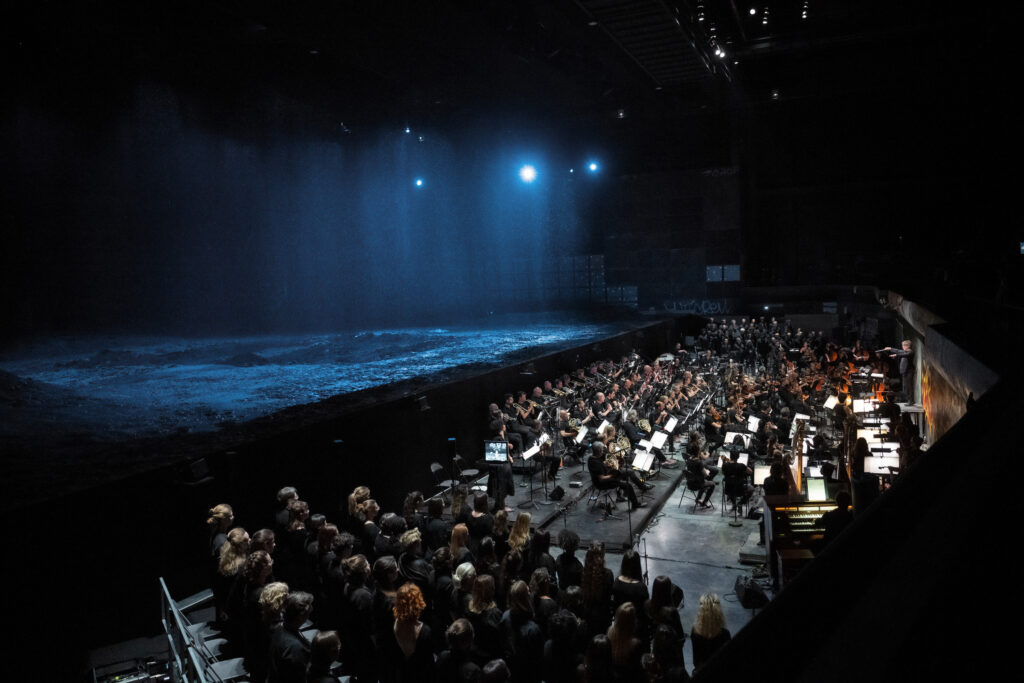Gustav Mahler himself once offered a program guide to his magnificent symphonic resurrection, later renounced. Just now at the Aix Festival stage director Romeo Castellucci has tried again, and maybe nailed it. After his fashion.
And what a Mahler Symphony No. 2 in C minor, “Resurrection” it was! Conductor Esa-Pekka Salonen led 125 players of the Orchestra de Paris (the faraway French capital’s major orchestra), plus 100 or so singers of the Chœur de l’Orchestra de Paris at an abandoned stadium found atop an isolated, bleak hill not far from the Marseille airport — a magnificent huge, black, graffiti covered block of concrete resurrected!
This foreboding structure was first used in 1994, only four years later it fell into disuse. But just now a single wall of terrifyingly steep stadium seating (no hand rails or other protections) overlooked a massive pit holding the orchestra, chorus and soloists, all very visible to all of us perched above. Behind the pit was a massive staging area, surely exceeding the dimensions of Pierre Audi’s Park Avenue Armory in New York.
Just the place for famed Italian metteur en scène Roméo Castellucci to once again establish himself as a pillar of avant-garde theater, echoing his renowned 2002/2004 Tragedia Endogonidia where he redefines theater as an abstract musical form (closely associated with opera before supertitles, i.e. no discernible words though something or the other is evidently happening).
Mahler knew his programmatic words failed his symphony. Castellucci forsakes all literary words, rendering them only as elements of his musical fabric. Thus in this performance it was no longer Mahler’s Resurrection Symphony, Castellucci had made it into his own.
Except he hadn’t. An artist of equal prowess, Esa-Pekka Salonen, held us in the thrall of one of the most massive pieces of musical construction ever conceived, the subject of which is the multitude of complex questions of human existence. The acoustic of the stadium was, surprisingly, as huge and as precise as the subject of the opera. In the final moments of the opera Mahler adds the organ to capture the grandeur of whatever resurrection may mean to you. It became big, very big, beyond huge, beyond gigantic. [It was just a mightily amplified synthesizer.]
The crowning achievement of the Castellucci staging happened in fact not on the stage, but in the pit. Rows of choristers had sat silently either side of the orchestra for the first four of the massive symphony’s five movements. When finally they began to sing we realized that they had no scores! The magic of this imposing human image was then overwhelmed when, with the words “with wings that I have earned” they rose to their feet!
It was resurrection, may there be no doubt.
The Castellucci mise en scène began in silence, a magnificent, pure white horse came onto the massive dirt mound that was the stage. It slowly, magically crossed the staging area. As it began to exit through the stadium’s loading bay it was caught by young woman who had her cell phone in hand to call for help. Mahler’s symphony began. [See lead photo, all photos © Monika Rittershaus, courtesy of the Aix Festival.]

An small army of excavators arrived in trucks, a scoop caterpillar as well. The first four Mahler movements — the allegro maestoso, the andante moderato, the scherzo, “Urlicht,” — saw the slow exhumation of a mass grave in the dirt, surely that of mankind in all its tragic guises. The countless bodies were then loaded in the trucks and driven off, though one excavator remained and continued to dig frantically with his hands. Finally a very last excavator shed her white, protective coveralls, leaving it in the abstract form of a pure white bird against the barren earth.
This was the final Castellucci image — the abandoned mound of dirt, the only discernible form a tiny white bird. As Mahler’s play of scherzos moved toward their majestic symphonic conclusion the lighting became always magically more suggestive. Within the final Mahlerian sonic magnificence a subtle rain began to fall onto this empty expanse, awaiting life.
Resurrection.

Esa-Pekka Salonen is a conductor of exquisite refinement. From within the sense of absolute intellectual control he imposes, the full expressive power of music emerges — immediate and pure. With the Castellucci intelligence, Salonen created a highly estimable work of theater art for the Aix Festival.
Michael Milenski